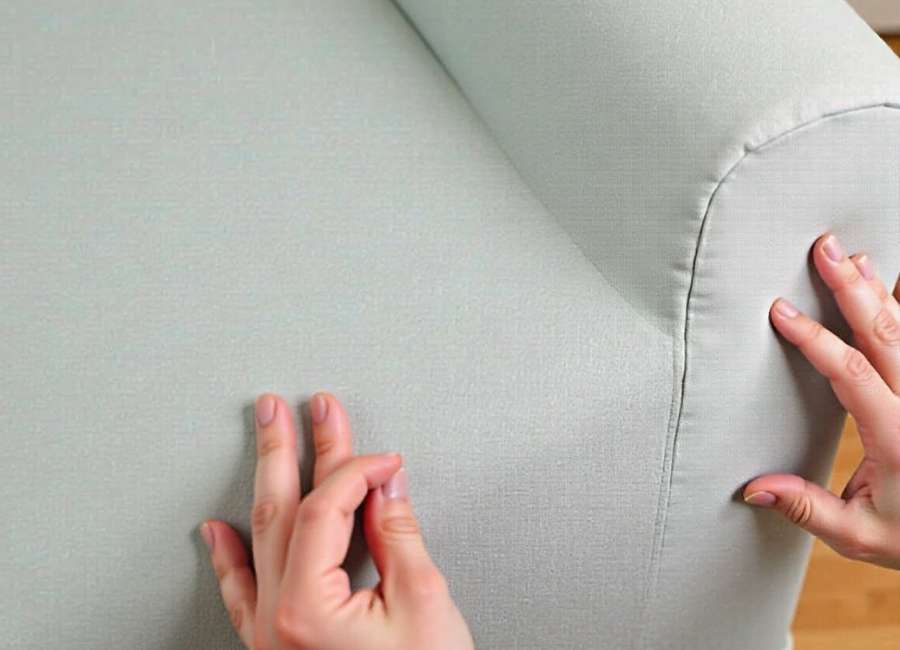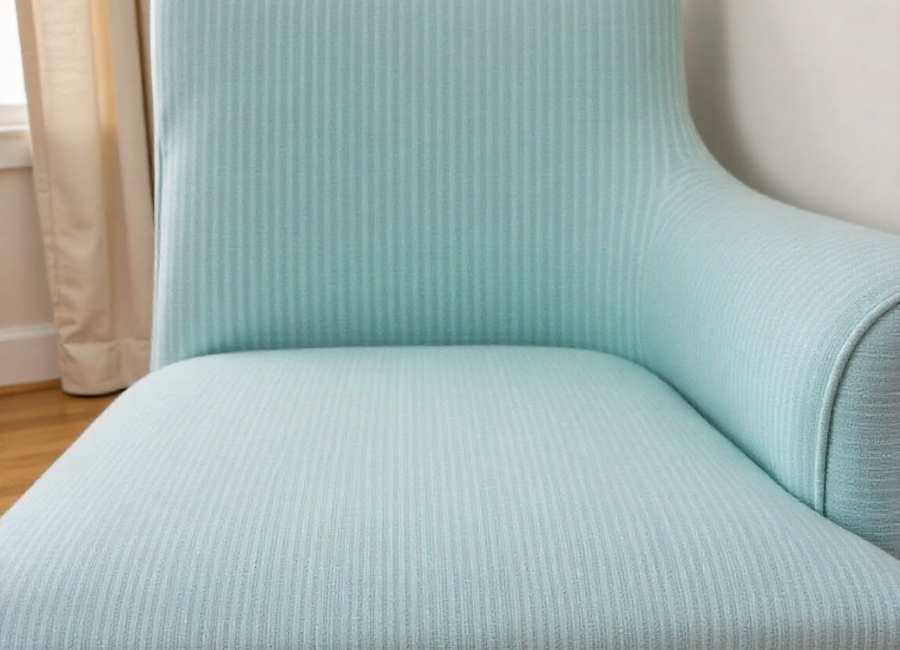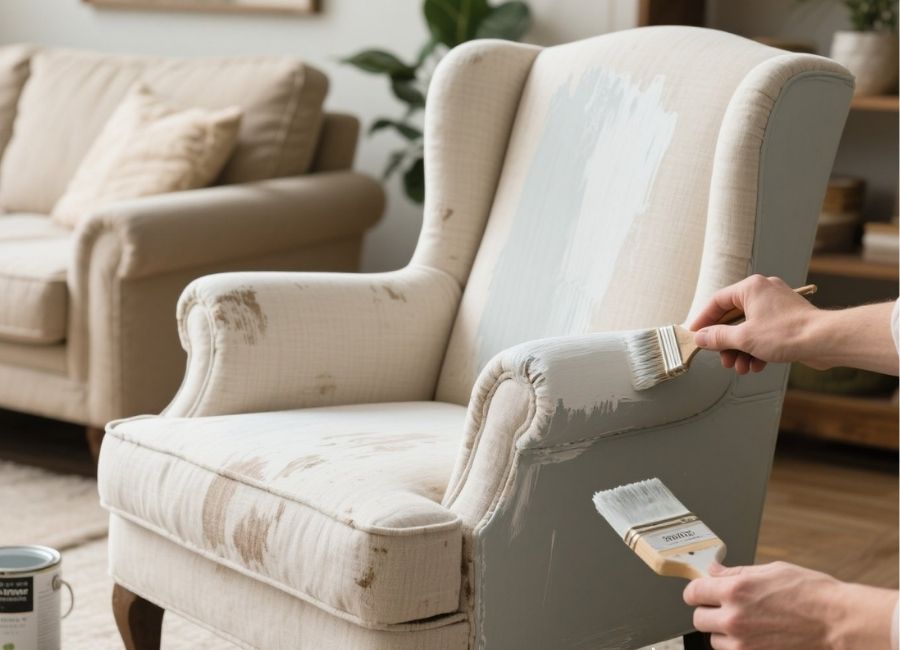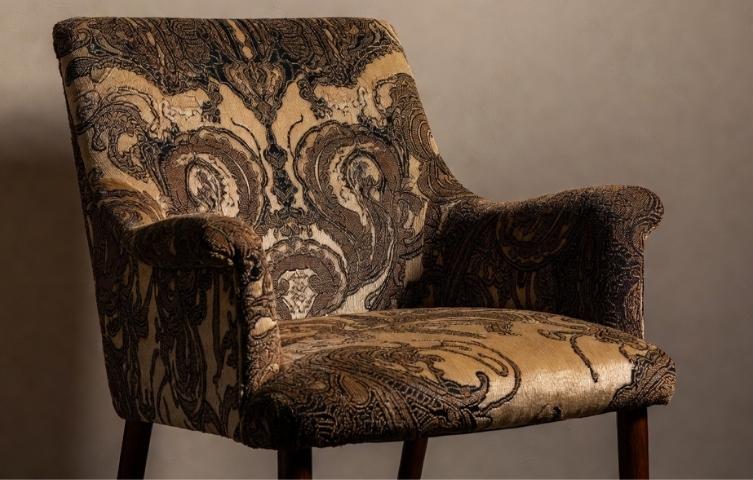Do you have a faded armchair or a stained sofa that has seen better days? Before you discard it, consider a simple and cost-effective solution: painting the fabric. This guide will walk you through the process of painting fabric furniture, transforming your old pieces into new-looking assets for your space.
Painting fabric furniture is a practical way to update your home without the high cost of reupholstering or buying new items. (How to Paint a Fabric Chair: 6 Steps (with Pictures), 2023) This method works well on sturdy, tightly woven fabrics, such as cotton, canvas, or polyester blends. It is less effective on materials like velvet or chenille, which have a raised pile. By following the correct steps, you can achieve a durable, professional finish that revitalizes your furniture.
This post provides clear, step-by-step instructions for your project. You will learn what materials you need, how to prepare your furniture, and the proper technique for applying paint to fabric. We will also cover how to seal the paint for long-lasting results.
Why Paint Fabric Furniture?

Painting fabric offers several advantages over other restoration methods.
- Cost-Effective: It is significantly cheaper than reupholstering, which often requires professional services and expensive materials.
- Customization: You have complete control over the color and finish, allowing you to match your furniture perfectly to your existing decor.
- Durability: When done correctly, a painted fabric surface is durable and easy to clean, making it a practical choice for high-traffic areas.
Step 1: Gather Your Materials
Before you begin, gather the necessary tools and supplies. Having everything on hand will make the process smoother and more efficient.
You will need:
- Fabric or chalk paint: Choose a high-quality paint designed for fabric. Chalk paint is also a popular choice as it adheres well and provides a soft finish. (Chalk-Based Furniture Paint | Candy Floss | Shabby Chic | Chalky Matt Finish, n.d.)
- Fabric medium (if using regular latex paint): This is mixed with latex paint to keep the fabric soft and prevent cracking. (Will latex paint on canvas crack?, n.d.) If you use chalk or fabric paint, you do not need this.
- Paintbrushes: A variety of sizes will be useful for covering large areas and detailing smaller sections.
- Sandpaper: A fine-grit sandpaper (220-grit or higher) helps to soften the fabric between coats.
- Spray bottle with water: Misting the fabric with water helps the paint absorb more evenly. (11 Tips To Know Before You Start Painting Fabric, n.d.)
- Drop cloths or plastic sheeting: Protect your floors and surrounding furniture from paint spills.
- Painter’s tape: Use this to cover any wood or metal parts of the furniture you do not want to paint.
- Vacuum cleaner with an upholstery attachment: For cleaning the furniture before painting.
- Fabric sealant or clear wax: To protect the finished surface and give it a slight sheen.

Step 2: Prepare the Furniture
Proper preparation is the most important step for achieving a professional finish. Do not skip these tasks, as they ensure the paint adheres correctly and lasts longer.
- Clean the Fabric: Start by thoroughly vacuuming the entire piece of furniture. Use an upholstery attachment to remove all dust, pet hair, and loose debris from the surface and crevices. If there are any stains, clean them with an appropriate fabric cleaner and allow the area to dry completely.
- Protect Non-Fabric Areas: Apply painter’s tape to any wood trim, legs, or metal hardware to prevent damage. This will give you clean lines and protect these sections from accidental paint drips.
- Set Up Your Workspace: Lay down drop cloths or plastic sheeting to protect your work area. Ensure the space is well-ventilated to allow paint fumes to dissipate.
Step 3: Mix and Apply the First Coat of Paint
With your furniture prepped, you are ready to start painting. The first coat is crucial for creating a smooth base.
- Dampen the Fabric: Lightly mist a section of the fabric with water using your spray bottle. Do not oversaturate it; the goal is to make the fabric damp, not wet. This helps the paint to spread more easily and absorb into the fibers.
- Dilute the Paint: In a separate container, mix your paint with water. A good ratio to start with is 1 part paint to 1 part water. (Fabric Painting Tutorial, n.d.) If you are using latex paint, mix it with a fabric medium according to the product’s instructions before adding water. The mixture should be thin, with a consistency similar to that of cream.
- Apply the First Coat: Using a paintbrush, apply the diluted paint to the dampened section. Work in small areas at a time, using long, even strokes. Ensure you cover the fabric completely, pushing the paint into the fibers. Continue this process until the entire piece is covered.

Step 4: Apply Subsequent Coats
Your furniture will likely require multiple coats to achieve full, even coverage. Patience during this stage is key to a quality result.
- Let it Dry: Allow the first coat to dry completely. This can take anywhere from a few hours to a full day, depending on the humidity and temperature of your workspace.
- Sand lightly: Once the paint is dry, the fabric may feel stiff. Lightly sand the entire surface with fine-grit sandpaper to smooth out any roughness and soften the texture. After sanding, wipe away the dust with a clean, dry cloth.
- Apply Additional Coats: Apply the second coat of paint. This time, you can use a slightly thicker paint mixture (less water) for better coverage. Repeat the process of painting, drying, and sanding between each coat until you are satisfied with the color and finish. Most projects will require 2-3 coats of paint. (How to Paint a Fabric Chair, n.d.)
Step 5: Seal the Furniture
Sealing the paint is the final step. It protects the surface from wear and tear, giving it a polished, finished look.
- Choose a Sealant: You can use a clear fabric sealant or a clear finishing wax. Sealants often come in a spray can, while wax is applied with a cloth.
- Apply the Sealant: If using a spray sealant, hold the can about 8-12 inches from the surface and apply a thin, even coat. If using wax, apply a small amount to a clean cloth and rub it into the fabric in a circular motion.
- Buff if Necessary: After applying wax, you may need to buff the surface with a clean cloth to remove any excess and create a subtle sheen.
- Allow to Cure: Let the sealant dry and cure completely. This can take up to 24-48 hours. (How to Use Upholstery Paint For Furniture (Fabric & Leather), n.d.) Once cured, your newly painted furniture is ready to use.
Get Your Project Started
Painting fabric furniture is a straightforward project that can completely change the look of a room. With the right materials and a methodical approach, you can restore old furniture and give it a new, durable finish. This guide provides all the steps you need for a successful outcome. From scrubbing to sanding, learn step-by-step techniques to restore your surfaces!











